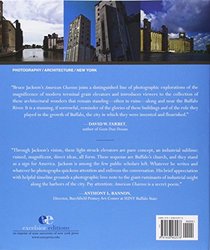Search -
American Chartres: Buffalo's Waterfront Grain Elevators
American Chartres Buffalo's Waterfront Grain Elevators
Author:
On a visit to Buffalo, New York, the French poet Dominique Fourcade was awed by the huge concrete grain elevators that line the city s river and lakefront. Turning to his guide, the poet Susan Howe, he exclaimed, The American Chartres! Taking Fourcade s exclamation as its title, Bruce Jackson s "American Chartres" documents Buffalo s surviving g... more »
Author:
On a visit to Buffalo, New York, the French poet Dominique Fourcade was awed by the huge concrete grain elevators that line the city s river and lakefront. Turning to his guide, the poet Susan Howe, he exclaimed, The American Chartres! Taking Fourcade s exclamation as its title, Bruce Jackson s "American Chartres" documents Buffalo s surviving g... more »
ISBN-13: 9781438462578
ISBN-10: 1438462573
Pages: 200
Rating: ?
ISBN-10: 1438462573
Pages: 200
Rating: ?
0 stars, based on 0 rating
Publisher: Excelsior Editions/State University of New York Press
Book Type: Hardcover
Members Wishing: 1
Reviews: Amazon | Write a Review
Book Type: Hardcover
Members Wishing: 1
Reviews: Amazon | Write a Review
Genres:
- Arts & Photography >> Photography & Video >> Architectural
- Arts & Photography >> Photography & Video >> Equipment, Techniques & Reference
- Engineering & Transportation >> Architecture >> Regional
- History >> Americas >> United States >> State & Local




